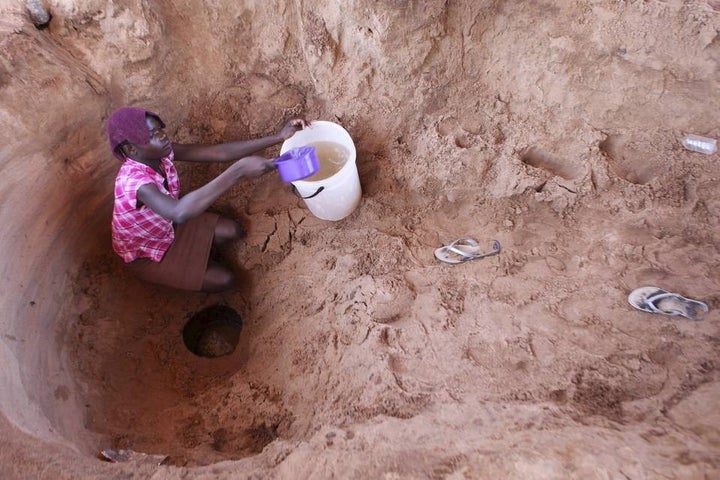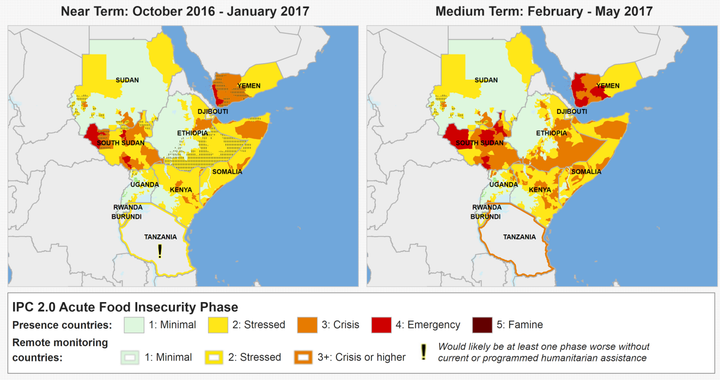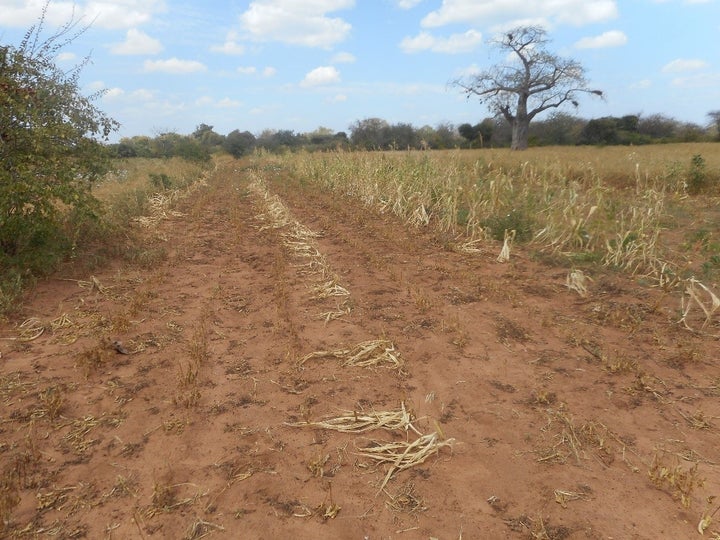
A woman fetching water in Kaaliro, Uganda from a dried up well. The community is threatened by the strong drought that has dried out the river bed.
Right now, several nations in East Africa are on the brink of famine. Here’s what we know:
The dual phenomena of El Niño, which began in 2015, and ensuing La Niña, have caused many areas of East Africa to experience shortened and erratic rainfalls, leading to reduced crop production and depleted pastures for grazing.
The January harvest of maize (corn) is expected to be 50 percent below normal. Maize is a staple crop across East Africa, and without enough to go around, families are likely to go hungry. Right now predictions are that the areas affected will experience what’s called IPC Phase 3 (Crisis) conditions by May 2017. That means that families are already trying to cope by skipping meals, reducing portions, looking for off-farm labor opportunities, or selling household assets, including livestock, to provide food for their households.
When farmers don’t work their farms, their crops suffer. When they sell of livestock, they become even less economically stable, making it hard to withstand future challenges.

Food security situation in May 2017. IPC Phase 2 – Stressed (yellow); Phase 3 – Crisis (orange) and Phase 4 – Emergency (red).
Here is how countries in East Africa have responded so far:
- On February 10, 2017, the President of Kenya declared the drought a national disaster in 23 counties. The Kenyan government projects that about 1.3 million people are currently affected by the drought and in need of immediate support. This number is estimated to increase to 2.4 million people by April 2017.
- On February 20, 2017, the Government of South Sudan declared portions of Unity State in famine or high likelihood of famine due to war and a collapsing economy. Approximately 100,000 people are currently facing famine with an additional 1 million on the brink of famine. A formal famine declaration means that people have already started dying of hunger. Urgent action is needed to prevent additional deaths.
International Humanitarian Response
Most international attention to date has been placed on Nigeria, Yemen, South Sudan and Somalia, which face a credible risk of famine (IPC Phase 5) this year due to the multiplier effects of drought, insecurity and economic instability. While the needs in Kenya, Tanzania and Uganda are expected to be great, it is unclear at this time if additional support will be provided in these countries this year.
Lutheran World Relief is Responding
Lutheran World Relief is currently active in Kenya, Tanzania, South Sudan and Uganda in East Africa. The agency has committed an initial $120,000 for an emergency response to implement cash-for-work programming in Kenya to help families earn much-needed money to buy food now and repair important water structures for the future. LWR is also exploring efforts to support its long-time partner Lutheran World Federation to address the food security needs of affected populations in South Sudan.

Crops in Kenya that should be ready for harvest have withered in the field due to a lack of rainfall.
